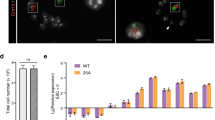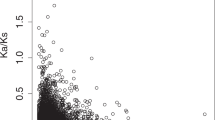Abstract
AN extra genetic load in the form of extra chromosomes is a severe impediment to normal differentiation and development in man. There is an especially high association of mental retardation with the extra chromosome state, but a variety of other developmental anomalies are also found1. Possibly the best known example is Down's syndrome or mongolism in which there are three number 21 chromosomes rather than two, producing severe mental retardation as well as multiple (rather characteristic) somatic abnormalities2. Redundancy of the sex chromosomes is also associated with mental retardation, but especially interesting is the fact that a female with extra X chromosomes does not show precocious sexual development. An understanding of the harmful effects of chromosomal redundancy at the fundamental level would, of course, give an insight into some basic aspects of differentiation and development, as well as make it possible to assign specific gene functions to the affected chromosomes.
This is a preview of subscription content, access via your institution
Access options
Subscribe to this journal
Receive 51 print issues and online access
$199.00 per year
only $3.90 per issue
Buy this article
- Purchase on Springer Link
- Instant access to full article PDF
Prices may be subject to local taxes which are calculated during checkout
Similar content being viewed by others
References
Rappopoit, S., and Kaplan, W. D., J. Pediatrics, 59, 415 (1961).
Lejeune, J., Gautier, M., and Turpin, R., C. R. Acad. Sci., Paris, 248, 602 (1959).
Jacob, F., and Monod, J., Cold Spring Harbor Symp. Quant. Biol., 26, 193 (1961).
Novick, A., McCoy, J. M., and Sadler, J. R., J. Mol. Biol., 12, 325 (1965).
Sadler, J. R., and Novick, A., J. Mol. Biol., 12, 305 (1965).
Gallant, J., and Stapleton, R., Proc. U.S. Nat. Acad. Sci., 50, 348 (1963).
Morse, M. L., Lederberg, E. M., and Lederberg, J., Genetics, 41, 142 (1956).
Anderson, D. E., and Ogg, J. E., Amer. Soc. Microbiol., Bact. Proc., 66, 82 (1966).
Author information
Authors and Affiliations
Rights and permissions
About this article
Cite this article
YIELDING, K. Chromosome Redundancy and Gene Expression: an Explanation for Trisomy Abnormalities. Nature 214, 613–614 (1967). https://doi.org/10.1038/214613a0
Issue Date:
DOI: https://doi.org/10.1038/214613a0
This article is cited by
-
Genotype and phenotype in human chromosome aberrations and in the minute mutants of Drosophila melanogaster
Humangenetik (1973)
-
Abnormal Sex Chromosomes and Mental Disorder
Nature (1969)
-
Transmission and phenotypic effect of a duplicate chromosome segment in maize
Molecular and General Genetics MGG (1968)
-
Kerntrockengewicht, DNS-Gehalt und Chromosomen bei akuten Leukämien im Kindesalter
Virchows Archiv B Cell Pathology (1968)
Comments
By submitting a comment you agree to abide by our Terms and Community Guidelines. If you find something abusive or that does not comply with our terms or guidelines please flag it as inappropriate.



